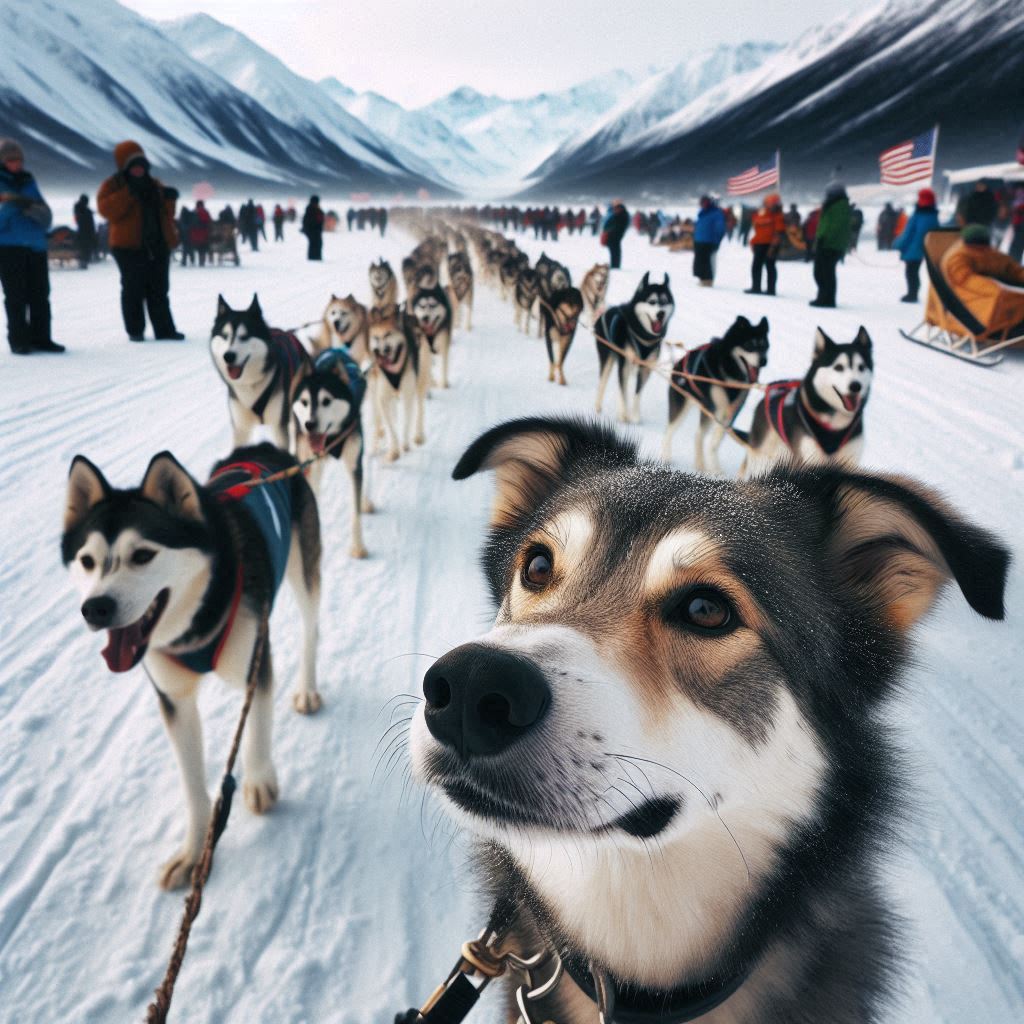The Iditarod Trail Sled Dog Race is not merely a competition; it is a legendary test of resilience, determination, and the unyielding bond between mushers and their sled dogs. Set against the breathtaking and often unforgiving Alaskan wilderness, this annual event captures the imagination of spectators across the globe. Dubbed “The Last Great Race on Earth,” the Iditarod is a historic journey that showcases human and canine endurance in its purest form.
A Historic Legacy: The Origins of the Iditarod
The Iditarod race traces its origins back to the Serum Run to Nome, an unprecedented event held in 1925. During a fatal diphtheria outbreak in Nome, Alaska, courageous sled dogs and mushers carried life-saving medicine across nearly 700 miles of dangerous terrain. This incredible performance, known as The Great Race of Mercy, paved the way for the contemporary Iditarod, which was formally formed in 1973 to honor Alaska’s sled dog legacy and maintain the mushing culture.
The Iditarod Trail: A Test of Endurance and Skill
Spanning nearly 1,000 miles, the Iditarod Trail runs from Anchorage to Nome, following a path once used by Native Alaskans and early settlers. The route changes slightly each year, alternating between the northern and southern trails to ensure fair competition. Along the way, mushers and their teams must conquer some of the most extreme conditions on Earth, including:
- Temperatures plunging to -50°F (-45°C)
- Ferocious winds exceeding 60 mph
- Blizzards, whiteouts, and dangerous ice crossings
- Frozen tundra, dense forests, and grueling mountain passes

The Race Format: Rules and Checkpoints
The Iditarod is a time-controlled endurance race with 20 to 26 checkpoints, where mushers must stop to rest and care for their dogs. The key rules include:
- Each musher starts with up to 14 sled dogs.
- At least five dogs must remain harnessed at the finish line.
- Mandatory rest periods include a 24-hour break and two 8-hour stops.
- Sleds must carry essential survival gear, such as food, sleeping bags, and first aid supplies.
The Unsung Heroes: The Sled Dogs
The Iditarod is built around its remarkable sled dogs, especially Alaskan Huskies, which have been bred for endurance, strength, and the ability to resist extreme cold. These top canine athletes may run up to 100 kilometers per day and are picked for their endurance, intelligence, and collaboration. The lead dog is vital to navigating the course, making split-second judgments that might spell the difference between success and disaster.
Training and Nutrition
Sled dogs go through months of hard training, increasing endurance through long-distance runs and improving their ability to perform as a coordinated unit. Their nutrition is precisely planned, consisting of high-calorie, protein-rich meals such as fish, pork, and specialty dog food to keep them going in frigid temperatures.

Famous Mushers and Their Legendary Runs
Over the decades, the Iditarod has seen some of the greatest mushers in sled dog racing history, including:
- Rick Swenson – The only five-time Iditarod champion.
- Susan Butcher – A trailblazing four-time winner and the first woman to dominate the race.
- Lance Mackey – A four-time consecutive champion who overcame cancer.
- Dallas Seavey – One of the youngest and most accomplished mushers in recent history.
The Iditarod Experience: More Than Just a Race
The Iditarod is not just a sporting event—it is an integral part of Alaskan culture and heritage. Along the path, villages gather to welcome mushers, and thousands of volunteers work tirelessly to ensure the race works properly. The event draws a global audience who watch the dramatic ceremonial start in Anchorage, the hard mid-race difficulties, and the thrilling finale in Nome.
Impact on Alaskan Culture and Economy
The Iditarod has a profound impact on Alaska’s economy and tourism, drawing visitors from around the world. It also fosters an appreciation for sled dogs and traditional mushing skills, helping to preserve a vital aspect of Arctic history.
Challenges and Controversies
Like any major sporting event, the Iditarod faces challenges, including concerns over sled dog welfare. In response to scrutiny from animal rights organizations, race organizers have implemented strict veterinary protocols, requiring mandatory health checks at each checkpoint to ensure the well-being of all participating dogs.
How to Watch and Follow the Iditarod
For those eager to follow the excitement, there are several ways to stay updated:
- Live GPS Tracking – The official Iditarod website offers real-time tracking of mushers.
- TV and Online Streaming – Major networks provide coverage of key race moments.
- Social Media Updates – Many mushers share behind-the-scenes footage on Instagram, Facebook, and Twitter.
Conclusion: A Race Like No Other
The Iditarod Trail Sled Dog Race remains one of the world’s most challenging and awe-inspiring endurance events. It is a celebration of courage, perseverance, and the extraordinary partnership between humans and sled dogs. Whether you are a racing enthusiast, an adventurer at heart, or someone who appreciates remarkable feats of resilience, the Iditarod is a spectacle that truly embodies the spirit of the Alaskan wilderness.
